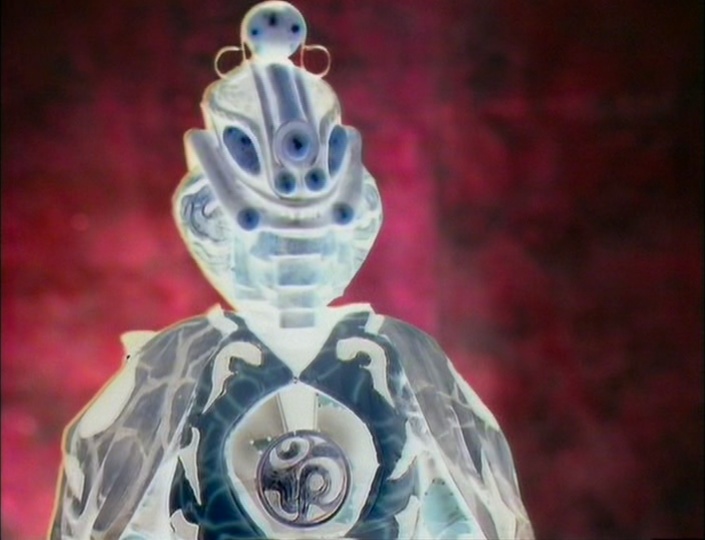Why am I still on Earth?
By the time Peter Grimwade’s “Mawdryn Undead” (Story Production Code 6F) airs in early 1983, Doctor Who has become fully serialized, in terms of viewer experience if not strictly such in a narrative sense. Aside from appearing twice a week, the show, under producer John Nathan-Turner and script editor Eric Saward, takes pains to link every story to past events, creating a continuity that appeals to consistent viewers while accepting that more casual observers may become a bit befuddled. It’s all one long tale at this point, punctuated, certainly, by formal story divisions but relying heavily on its history for much of its emotional and narrative weight. One consequence of this shift is the frequent presence of multiple plot lines, more than an individual story can reasonably sustain; taking the stories as isolated constructs, the screen feels crowded and the narrative threads remain underdeveloped, but looked at as a whole, much as in a soap opera, the fullness of the overarching story takes shape.

Such is the case here, with three separate strands running through this clever tale of time travel gone awry. Indeed, “Mawdryn Undead” stands as one of the few stories in Doctor Who to feature time travel as an integral complication to the narrative. For a show about time travel, there’s surprisingly little of it on display, usually employed to set the scene for the story on offer. One has to go back to “City of Death” for the last time various temporal states played a significant narrative role, and before that arguably all the way back to “Day of the Daleks.” It’s a shame, then, that the overcrowding of the story, in order to establish a three story mini-arc dredging up yet another moldy villain from the past, the Black Guardian (Valentine Dyall), gets in the way of the far more welcome return of another familiar figure, Brigadier Lethbridge-Stewart (Nicholas Courtney).

More precisely, there are two Brigadiers in “Mawdryn Undead,” one from 1977 shortly after his retirement from UNIT (that dating completely upending prior UNIT story chronologies) and one from 1983, bereft of a mustache as well as all memory of the Doctor. The loving care with which Grimwade, Nathan-Turner, Saward, and director Peter Moffat—a potent Doctor Who production team to be sure—delicately intertwine the story between the two time frames and finally unite the temporally bifurcated Brigadiers, explosively, forms the beating heart of this tale and stands as a real accomplishment, proving that callbacks to Doctor Who‘s history can work, when treated with respect and a deft touch.

When the TARDIS is yanked out of its trajectory by a spaceship on an infinitely fixed orbit in time and space, the Fifth Doctor makes an emergency materialization inside the interloping vessel, where he, Nyssa, and Tegan discover an empty docking port for another series staple, a transmat capsule, locked onto coordinates on Earth that just happen to be right up the hill from the boarding school where the Brigadier teaches (in both 1977 and the “present” day of 1983). Also at the boarding school is a mysterious orphan, Turlough (Mark Strickson), who has never quite fit in. An ill-advised joyride in the Brigadier’s prized car (in 1983) sees him thrown from the vehicle, near death, saved only by an offer from a mysterious stranger…




















